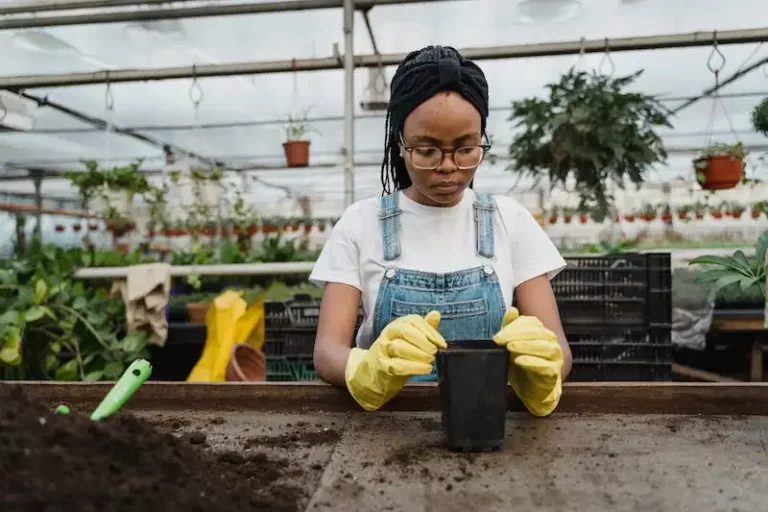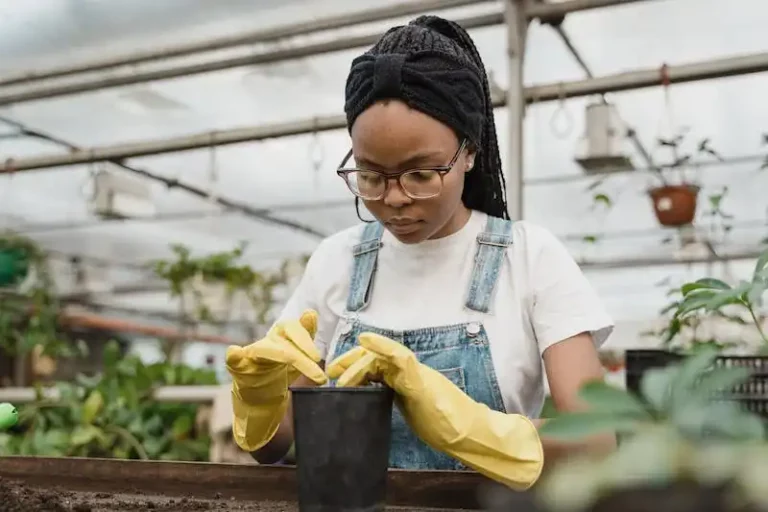Growing swiss, temperature can be a problem. Broccoli and cauliflower, for example, need the right timing in spring to begin growing. If you start them too late, the growing season may be too short. On the other hand, growing them too early in the cold can be a problem too. These five brassicas – cauliflowers, chard, kale, purple borecole and white borecole – can withstand cold weather to a certain level.
When growing cabbages and brassicas, timing is key. The best time to sow seeds is in spring, after the frost risk. The sowing can vary depending on the variety of plants. For example, calabrese is the first to be sown, followed by broccoli, cauliflower, and other brassicas. When the seedlings have grown a couple of inches, they need to be thinned, moving the plants to a space of about three inches apart. This is also a good time to give them a quick feed.
As the plants grow, proper spacing is important. Most brassicas have a spacing guide of at least 12 inches between plants. This allows the plants to grow leafy and develop large heads. However, the spacing can vary depending on the specific brassica and the size of the heads you want to harvest. Sue Sanderson, a brassica expert, suggests thinning out the plants after they’ve been growing for a short while to allow for easier access and better airflow.
After harvest, brassicas need some aftercare. They can be stored for a short period, especially in their tender heads. However, in colder areas, it’s common to leave them in the ground and pick them as needed throughout the winter months. Plus, brassicas, like cabbages and cauliflowers, are versatile and can be used in a variety of dishes. So, if you’re looking to grow some cabbages and brassicas, make sure to follow these tips and enjoy a fresh and delicious crop!
Links:
1. Guide to growing cabbages and brassicas: example.com/guide
2. Irrigation tips for growing cabbages: example.com/irrigation
3. Storage advice for cabbages and brassicas: example.com/storage
4. Aftercare guide for harvested brassicas: example.com/aftercare
Planting Spacing and Thinning
When it comes to growing cabbages and brassicas, proper planting spacing and thinning are key to ensuring a successful harvest. By giving your plants enough space and thinning them as needed, you will make their growing journey much easier.
For most brassicas, it is recommended to plant them in rows with a spacing of around 12 inches between each plant. This will provide enough room for the plants to grow and spread their foliage. However, some varieties, like Brussels sprouts or kohlrabi, may require a bit more space due to their larger size.
As your seedlings grow into sturdy young plants, thinning becomes necessary to give them even more room to thrive. Thin out your plants by removing the weaker seedlings, allowing the stronger ones to get the necessary nutrients and light they need to grow into healthy crops. The spacing between thinned plants should be around 18-24 inches, depending on the specific requirements of the crop.
Thinning is also important for the development of cabbage heads, as overcrowding can result in smaller heads. By removing some of the plants, you allow the remaining ones to grow larger and form solid heads. Additionally, thinning helps to improve air circulation around the plants, reducing the risk of diseases and pest infestations.
Timing is crucial when it comes to thinning. It is recommended to start thinning your brassicas when they have reached around 4-6 inches in height. This is usually about 3-4 weeks after planting. Be sure to water the plants well the day before thinning to minimize any stress on their roots.
Remember that thinning is not the same as harvesting. While thinning involves removing entire plants to create more space, harvesting involves picking mature heads or buds for consumption. Harvesting of brassicas usually begins around late spring for early varieties and can continue throughout the summer and fall.
When thinning your crops, there are a few tips to keep in mind. Firstly, always remove the weakest seedlings, leaving only the healthiest ones. Secondly, thin in dry weather, as wet conditions can lead to soil compaction and damage to the remaining plants. Lastly, if you are facing strong winds in your garden, thin your plants to prevent windrock, which can uproot plants and disrupt their growth.
In conclusion, proper planting spacing and thinning are very important for growing cabbages and brassicas. By giving your plants the right amount of space and thinning them when necessary, you can improve their overall health and yield. Follow this guide to achieve better results in your brassica gardens.
Brassica Row Spacing
When it comes to growing cabbages and other brassicas, row spacing plays a crucial role in their development and overall success. The distance between rows determines how much space each plant has to grow and access essential nutrients.
For most brassicas, including cabbages, cauliflowers, and calabrese, a row spacing of 24 inches is recommended. This allows enough room for the plants to spread their leaves and develop their heads fully.
However, some brassicas, such as mustard greens and rutabaga, can be grown with a narrower row spacing, around 12 inches. These crops can thrive in tighter spaces due to their smaller size and leafy nature.
Regardless of the row spacing, it is essential to have well-draining soil that is rich in organic matter. Brassicas prefer slightly acidic soil with a pH between 6.0 and 6.8. Adding compost or well-rotted manure to the soil before planting can improve its nutrient content and drainage.
Another important consideration when spacing your brassicas is the wind. These plants can be vulnerable to windrock, especially when they are young and have not developed strong root systems. Providing some protection, such as a windbreak or planting in a sheltered location, can help prevent wind damage.
Irrigation is also crucial for brassicas, especially during dry spells. Using drip irrigation kits or similar systems can provide consistent moisture to the plants’ roots while minimizing leaf wetness, which can promote disease development.
Spacing your brassicas properly can also help with disease management. By allowing more airflow between plants, you reduce the likelihood of diseases spreading from one plant to another. It is also easier to identify and remove any infected plants if they are spaced adequately.
Knowing the ideal row spacing for different brassicas can make your gardening experience easier and more successful. It ensures that each plant has enough space to reach its maximum potential, resulting in bigger and healthier crops.
- Keep in mind that the row spacing recommendations for brassicas are guidelines, and you can adjust them based on your specific growing conditions and preferences.
- For instance, if you are growing a variety of brassicas, such as purple sprouting broccoli and Brussels sprouts, you may need to provide them with more space, as these crops tend to grow larger.
- Remember to rotate your brassicas every year to prevent the build-up of soil-borne diseases. Avoid planting them in the same spot for at least three years.
- When transplanting brassicas, be careful not to damage the roots or disturb the soil too much. Handle the seedlings by their leaves or use cell trays to minimize root disturbance.
- The harvest time for brassicas varies depending on the type of crop. Cabbages and cauliflowers are usually ready for harvest when the heads are firm and dense, while leafy brassicas like spinach can be harvested continuously as the leaves mature.
By following these guidelines and paying attention to proper row spacing, you can optimize the growth and yield of your brassica crops. Happy growing!
Growing cabbages and brassicas
When it comes to growing cabbages and brassicas, Sanderson suggests planting them after the last frost in your area. On this page, you will find a guide to growing these vegetables, including preparation, soil requirements, and timing.
Starting with preparation, it’s important to have well-drained soil with a pH level between 6.0 and 7.5. Brassicas prefer a sunny spot, but they can also tolerate partial shade. Before planting, make sure to remove any weeds and break up the soil to a depth of at least 12 inches.
The timing of planting is crucial. Cabbages and brassicas should be started indoors 4-6 weeks before the last frost in your area. Once the plants reach a height of around 5 inches and have developed 5-6 leaves, they can be moved outside. Be sure to harden off the plants by gradually exposing them to outdoor conditions for a week before planting.
Brassicas are known for their sensitivity to frost, so it’s important to protect them if frost is forecasted. Covering the plants with a frost cloth or row cover can help prevent any damage. Additionally, planting in raised beds or using mulch can provide some extra insulation.
Depending on the variety, cabbages and brassicas can take anywhere from 60 to 120 days to mature. As the plants grow, it’s important to monitor their growth and provide adequate spacing. Cabbages, for example, should be spaced about 18-24 inches apart, while other brassicas like kale and Brussels sprouts need more room, around 24-36 inches.
Thinning is another important step to ensure healthy growth. Once the plants have formed their true leaves, thin them out so that there is enough space for each plant to grow. This will help prevent competition for nutrients and sunlight.
In terms of rotation, it’s best not to plant cabbages and brassicas in the same spot every year. This helps prevent the buildup of pests and diseases that can affect these crops. Ideally, rotate them with other crops from different families.
When it comes to harvesting, cabbages are ready when their heads feel firm. For other brassicas like kale or Brussels sprouts, you can start harvesting the leaves once they are large enough. Some varieties of kale can even be harvested throughout the winter.
In addition to the popular cabbage and kale, there are other members of the brassica family, including turnips, rutabagas, and cauliflower. Their growing requirements may slightly vary, but they generally follow the same guidelines as cabbages and other brassicas.
| Brassica | Time to maturity | Special instructions |
|---|---|---|
| Calabrese | 60-90 days | Sprouting broccoli, harvest before flowers open |
| Kohl rabi | 50-60 days | Harvest bulb when the size of a tennis ball |
| Rutabaga | 90-120 days | Harvest when roots are about 3 inches in diameter |
Overall, growing cabbages and brassicas can be a rewarding experience. With proper care and attention, you can enjoy a bountiful harvest of these nutritious and versatile vegetables.
On this page
In this section, you will find information about growing cabbages and brassicas. Whether you are a beginner or an experienced gardener, we have helpful tips and guidelines for you. Learn about the timing for sowing and transplanting, the spacing for different crops, and the aftercare required.
Find out how to raise transplants in square modules or cell trays, and when to transplant them into the garden. Discover the types of brassicas you can grow, including cabbages, calabrese, cauliflowers, kale, and collards. Learn about their specific requirements in terms of soil type, acidity, and depth of planting.
Discover the best aftercare practices for your brassica plants, from weeding and watering to applying lime and removing buds. Get tips on protecting your plants from windrock and pests, and learn how to store your crops for long-term use.
If you want to try something different, we also provide information on growing other leafy greens like mustard and Brussels sprouts. Find out the best timing for sowing seeds, raising transplants, and harvesting. Learn about the proper spacing and planting techniques for these crops.
On this page, you will find a real guide to growing cabbages and brassicas, written by gardening experts. Whether you are a beginner or an experienced grower, this information will help you succeed in your vegetable garden.



